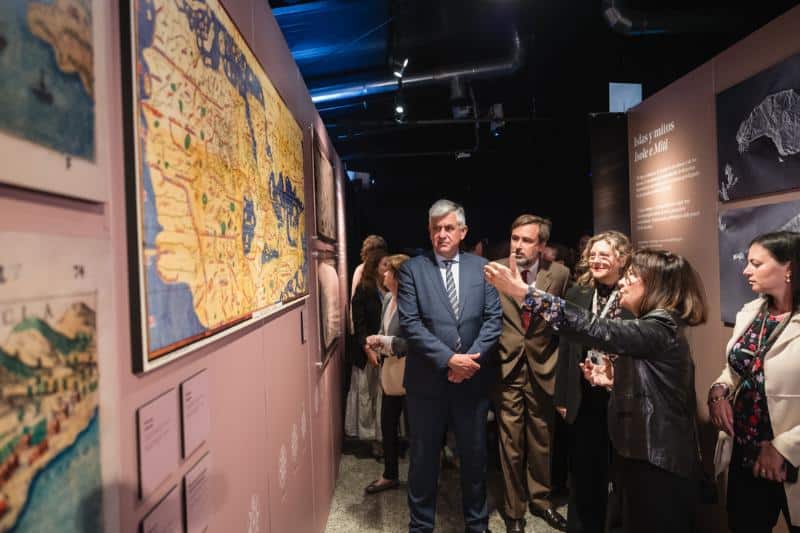The Ciutat de les Arts i les Ciències in collaboration with the Ministry of Foreign Affairs and International Cooperation of Italy has opened the new exhibition ‘Mediterranea’ that explores the Mediterranean of today and yesterday through images obtained from the most advanced space technology available and, in some cases, processed solely for the project by the Italian and European Space Agencies and by Telespazio/e-Geos of the Leonardo group and the MedOr Foundation.
The opening was attended by the president of the Board of Directors of the Ciutat de les Arts i les Ciències, Santiago Lumbreras, the general director of the Ciutat de les Arts i les Ciències, Ana Ortells, the consul general of Italy in Barcelona, Emanuele Manzitti, the director of the Italian Institute of Culture of Barcelona, Annamaria Di Giorgio, as well as the curator of the exhibition Viviana Panaccia.
‘Mediterranea’, located on the first floor of the museum, aims to represent the Mare Nostrum in its complexity, including the vulnerabilities and obstacles that threaten it today, through the narration of its history with unpublished satellite images, photographs, videos and installations with visual and emotional impact.
The exhibition is divided into three thematic areas: ‘History of lands and waters, peoples and cultures’, ‘Vegetation and fragrances’ and ‘Mediterranean today’. An interactive panel offers a dynamic image of the main events that have determined its history and the succession of civilizations and peoples that have contributed to founding an original Mediterranean culture. Old maps alternate with satellite images, allowing the public to travel along its coasts, among its myths and heroes, touching the ports, cities and islands that have marked the history of this sea.
The ‘Vegetation and Fragrances’ area is characterized by two site-specific interactive installations. An installation of aromatic plants and herbs helps recreate the atmosphere of the Mediterranean landscape. A second installation brings the visitor closer to one of man’s oldest foods, wheat, in its infinite Mediterranean varieties, and explains how it has contributed to transforming nomadic populations into sedentary ones, and the collector/hunter into a farmer. The images from space accompany a journey through Mediterranean crops, showing the shapes, colors and geometries of this extraordinary corner of the planet.
In ‘Mediterranean Today’, the exhibition addresses current issues such as climate change, large crops, agriculture that suffers from water scarcity and the processes of desertification and construction. Global warming and reduced rainfall represent two of the most serious threats to Mediterranean terrestrial ecosystems. A dynamic infographic wall shows the most significant figures. The itinerary ends with the installation “Artificial Symmetry”, which aims to raise a cry of alarm about the state of plastic pollution in the Mediterranean.
‘Mediterránea’ arrives in Valencia after several stops abroad (Beirut, Algiers, Zagreb, Rijeka before traveling to the Gulf.







